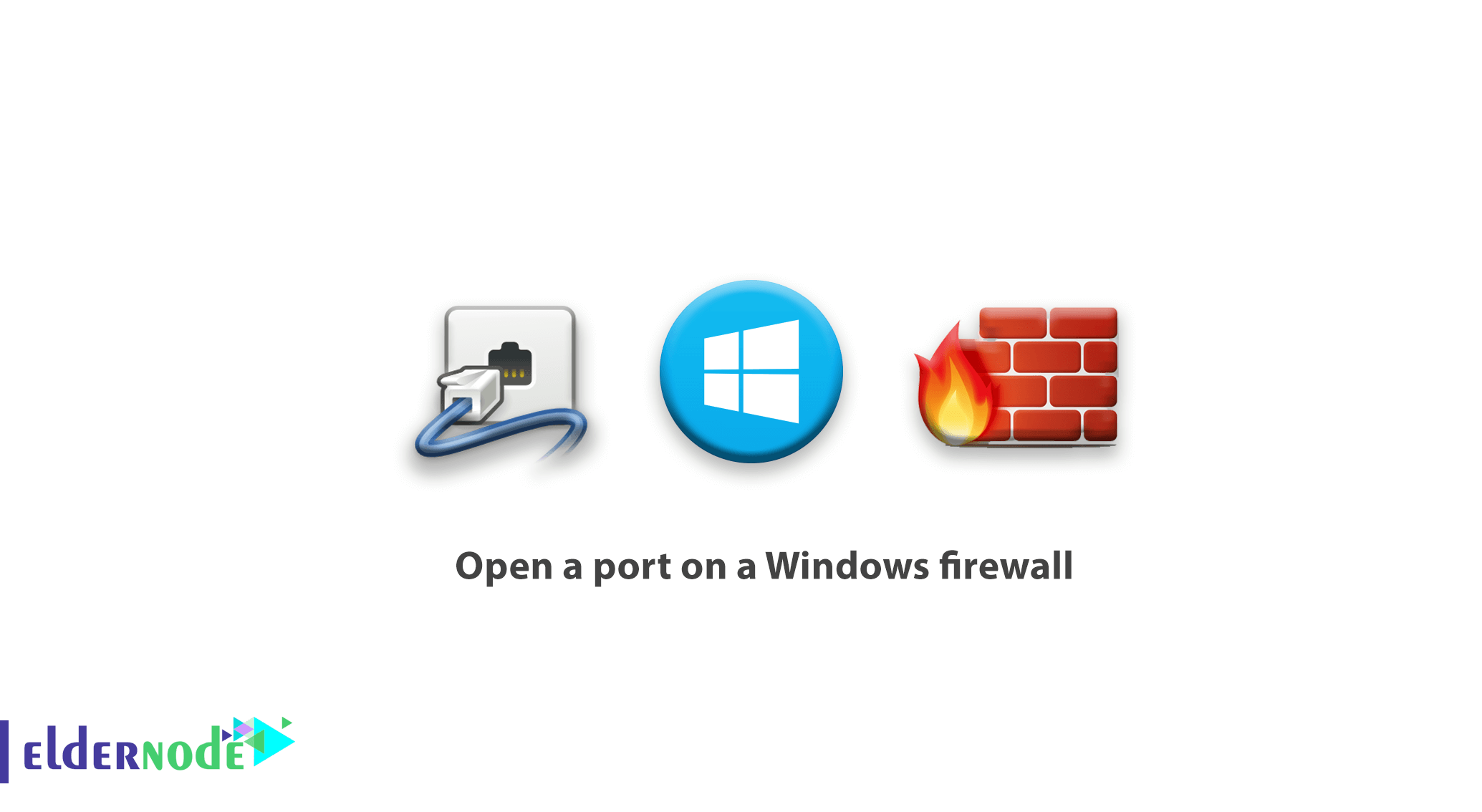
[Updated on Date: 2021-01-27] When a device is connecting to another device on the network, a port with a specific number is considering for this connection. The port is then opened and the receiving device is informed on how to manage the traffic related to this issue and which port to use. As the IP ID specifies which device should receive the traffic from the network, the port also specifies which application this traffic should be available to. In this article, we will learn how to open a port on a windows firewall. You can visit the packages available in Eldernode to purchase a Windows VPS server.
Table of Contents
Tutorial open a port on a Windows firewall
By default, all unwanted requests and traffic from the Internet and the network to a system are blocked by the Windows Firewall. However, if you have something like a game server running on your computer, you may need to open a port to allow traffic from your server to pass through your firewall.
How to open a port on a Windows firewall
Firewalls are tools that prevent unauthorized network inbound and outbound traffic on a computer. Of course, sometimes you want to allow unauthorized traffic to pass through the firewall, and that’s exactly what you need to open a certain port.
Click Start and search for “Windows Firewall“, then click “Windows Defender Firewall”.
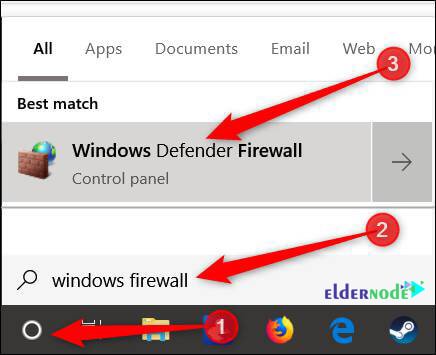
After Windows Firewall opens, click Advanced Settings.
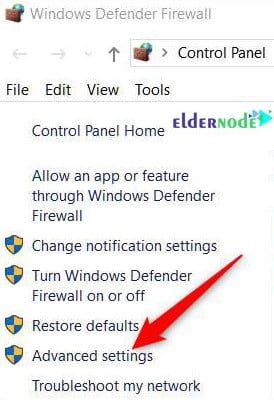
This will open the Windows Defender Firewall with Advanced Security window. Click on the “Inbound Rules” category in the left panel, then select “New Rule” from the right panel.

If you need to open a port for outbound traffic, you should select “Outbound Rule” instead of clicking “Inbound Rule“. Most apps make a rule in the “Outbound Rules” section when installing for themselves, and you don’t have to do this manually, but sometimes you’ll need to manually adjust this section.
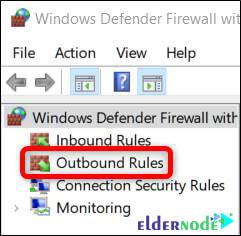
On the Rule Type page, select the Port option, and then click Next.
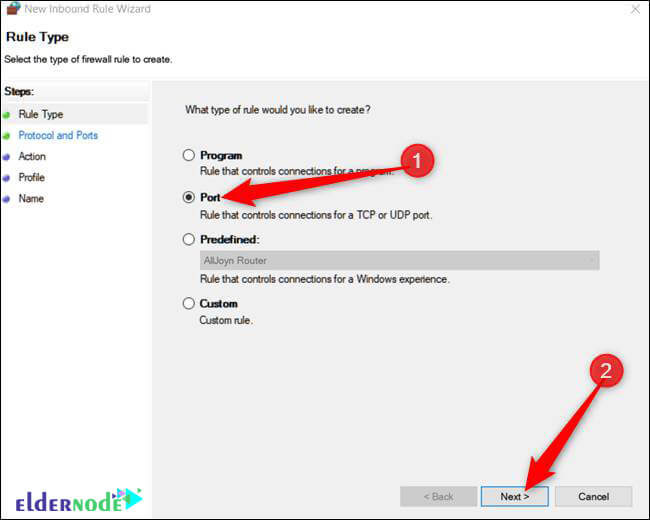
Open a port in Windows 10
On the next page, you need to specify whether your port uses the “TCP” protocol or “UDP“. An app may use any of these ports, so you can’t tell which one to choose.
The port number can be between 0 and 65535, although the first 1023 ports are reserve for certain services and you cannot use them. With this Wikipedia page, you can access an unofficial list of TCP and UDP ports and find the port used in your application. If you’re not sure if your app uses UDP or TCP, you can create an “Inbound Rule” rule for each protocol.
Select “Specific Local Ports” and then enter your desired port in the corresponding field. If you want to open more than one port, separate them using (,). If you want to open a set of ports, you can specify them with a dash (-). When done, click “Next“.
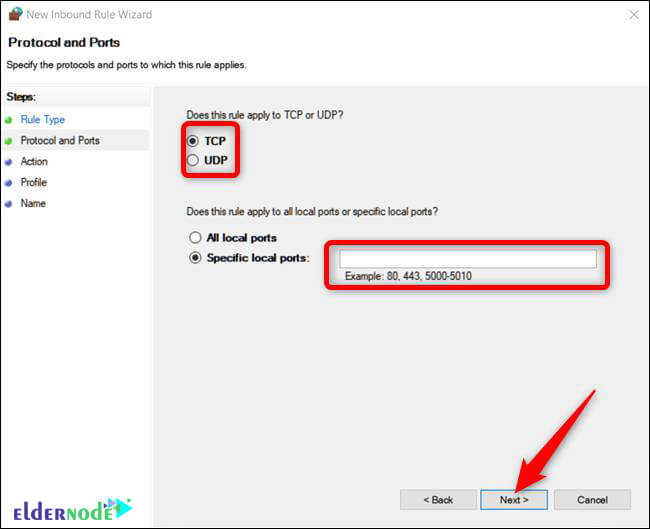
On the next page, click “Allow the Connection” and then click “Next“.
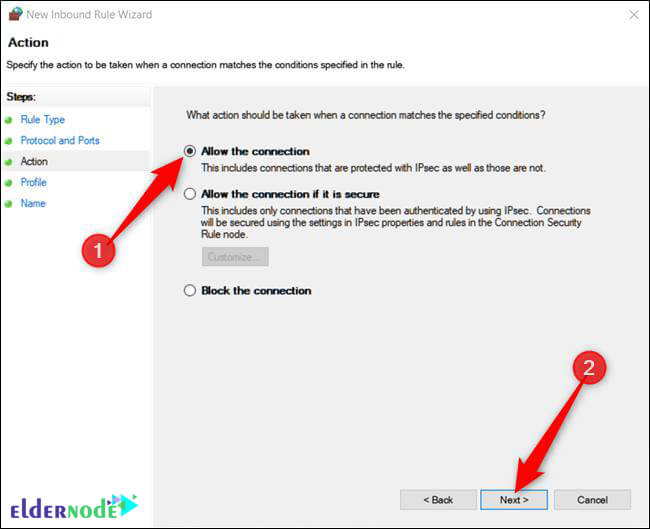
Note: In this tutorial, we have used the “Allow the Connection” option because we trust the application for which we have created a rule.
If you want to be more confident about your app’s connection, you can choose the “Allow the connection if it’s secure” option, which uses the Internet Protocol security system or “IPsec” to validate the connection. You can try this option, but many apps do not support it.
If you try this method and the result is not successful, you will be able to return to this section and select another option.
In the next step, specify when this rule should enforce and then click “Next“. The options in this section are as follows:
Domain: When a computer is connecting to a domain that Windows can validate.
Private: When a computer is connected to a private network, such as a home network or any network you trust.
Public: When a computer is connected to an open network, such as networks in cafes, libraries, airports, and anywhere else that anyone can connect to and whose security cannot be verified.
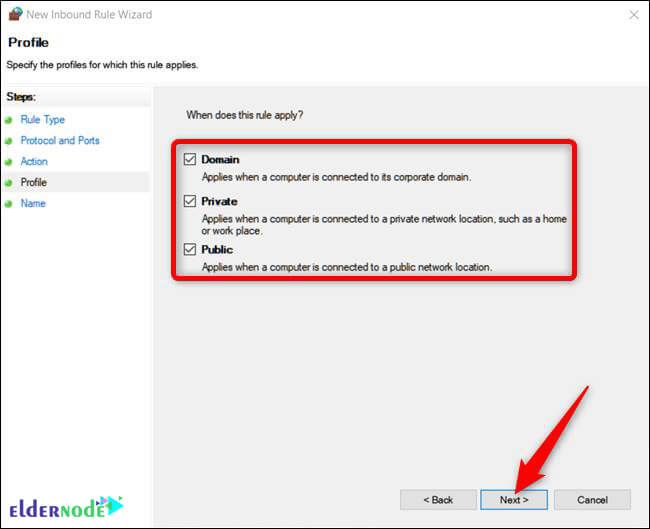
In the last window, enter a name and an optional description for your rule, and then click Finish.
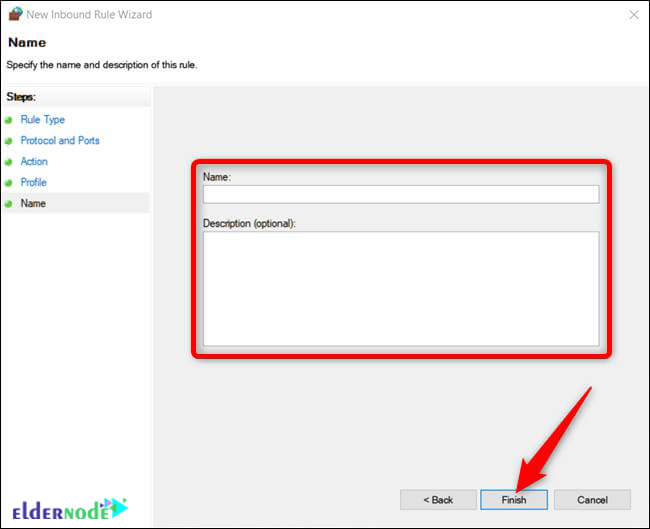
Whenever you want to disable this rule, you can find it in the “Inbound” or “Outbound” rule list, right-click on it, and then click “Disable Rule.”

Conclusion
Firewalls are tools that prevent unauthorized network traffic from entering and leaving a computer. Of course, sometimes you want to allow unauthorized traffic to pass through the firewall, and this is exactly where you need to open a certain port. Due to the importance of this issue, how to open the port on the Windows 10 firewall is fully and visually taught in this article. For more information, see Overview of the Windows Firewall Environment and How to add a Rule in Windows Firewall.


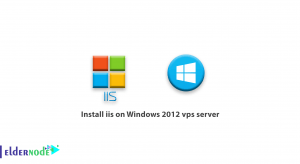


How many ports are there?
When do we need a port?
What command can be used to view open system ports?
The NetStat command can be used to view open system ports.
I opened port 465 on one of my servers, but when I check with the telnet command, it says it is closed. The firewall is off and I do not have an antivirus on that server. what is the reason?
Due to the risk of port 465, the said port may be blocked through routers and firewalls of the server provider.
What are inbound rules?
Input ports are on the server. For example, when you install IIS web server on your server, port 80 must be open on your server for clients to open sites. All ports that others use to connect to your server are configured here.
What are the outbound rules?
The output ports are on the server. This means which ports your server can connect to from other servers. For example, you have run a script on the server to connect to another server with a specific port. To do this, you must first open the port you want in this section.